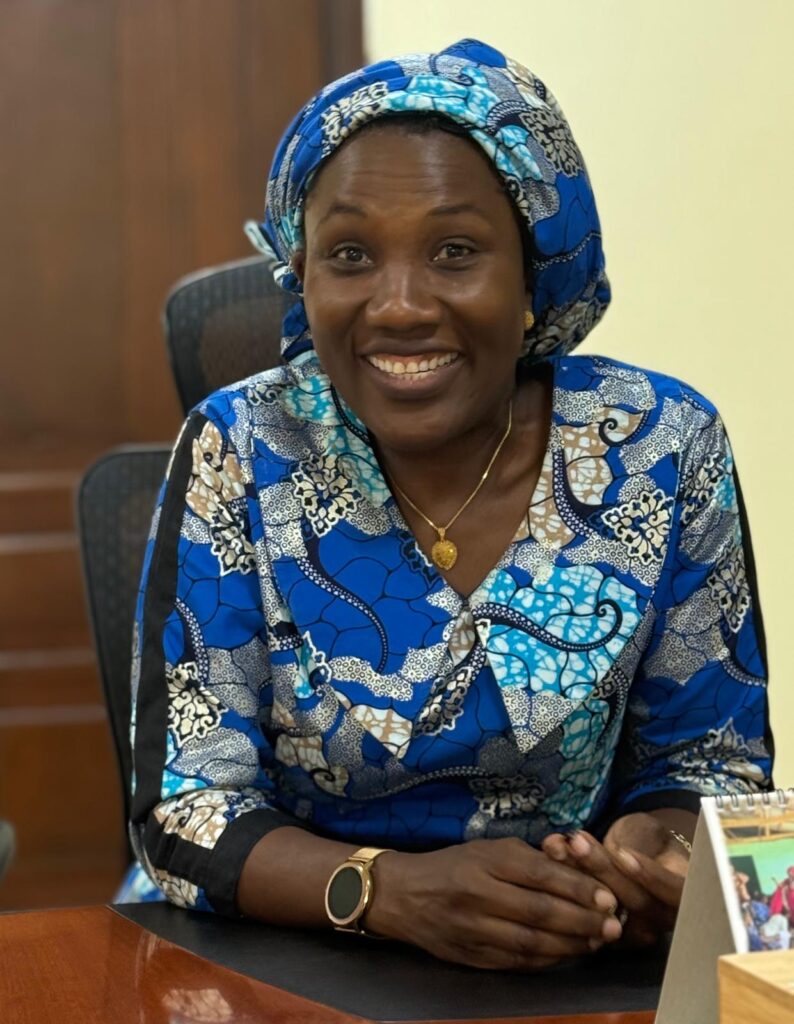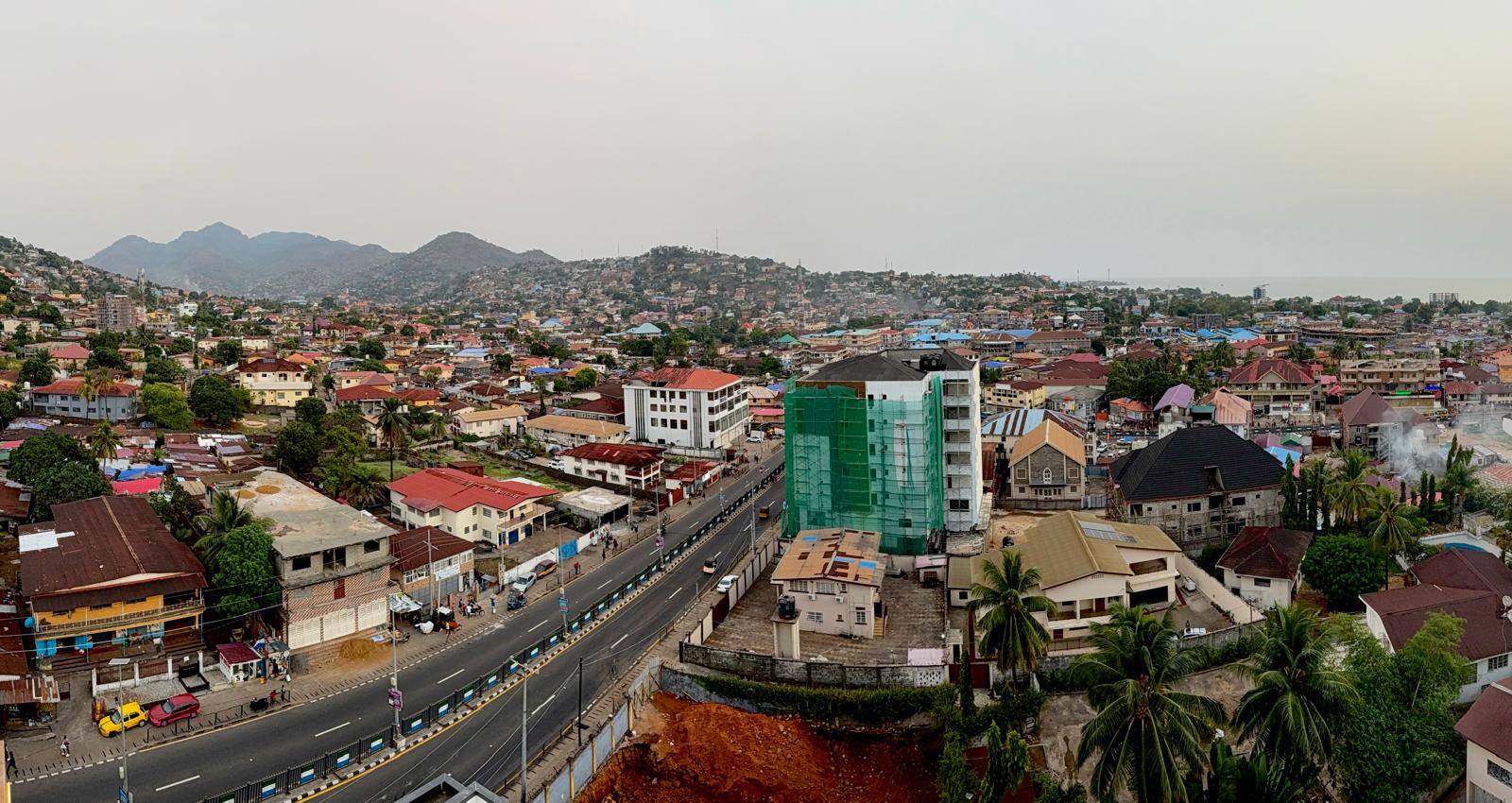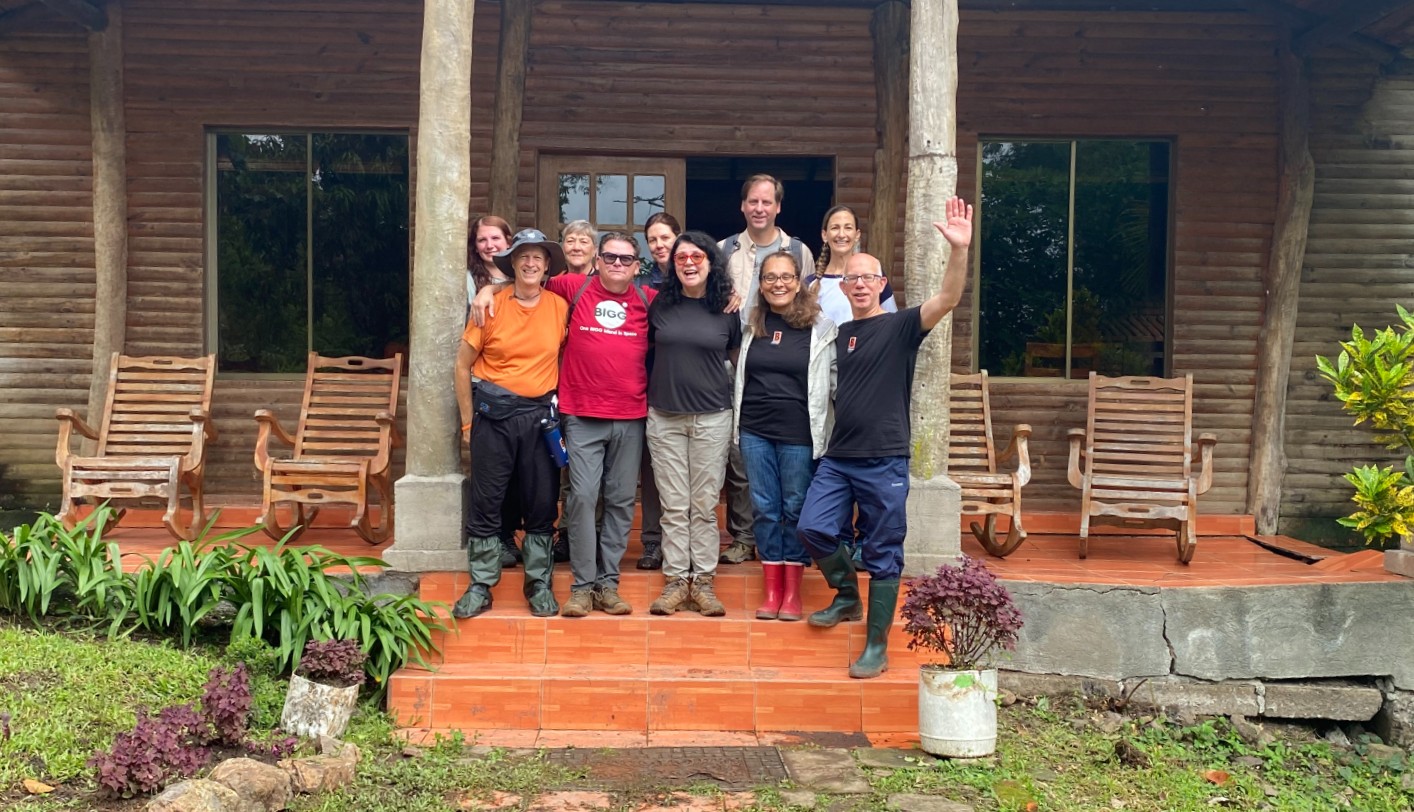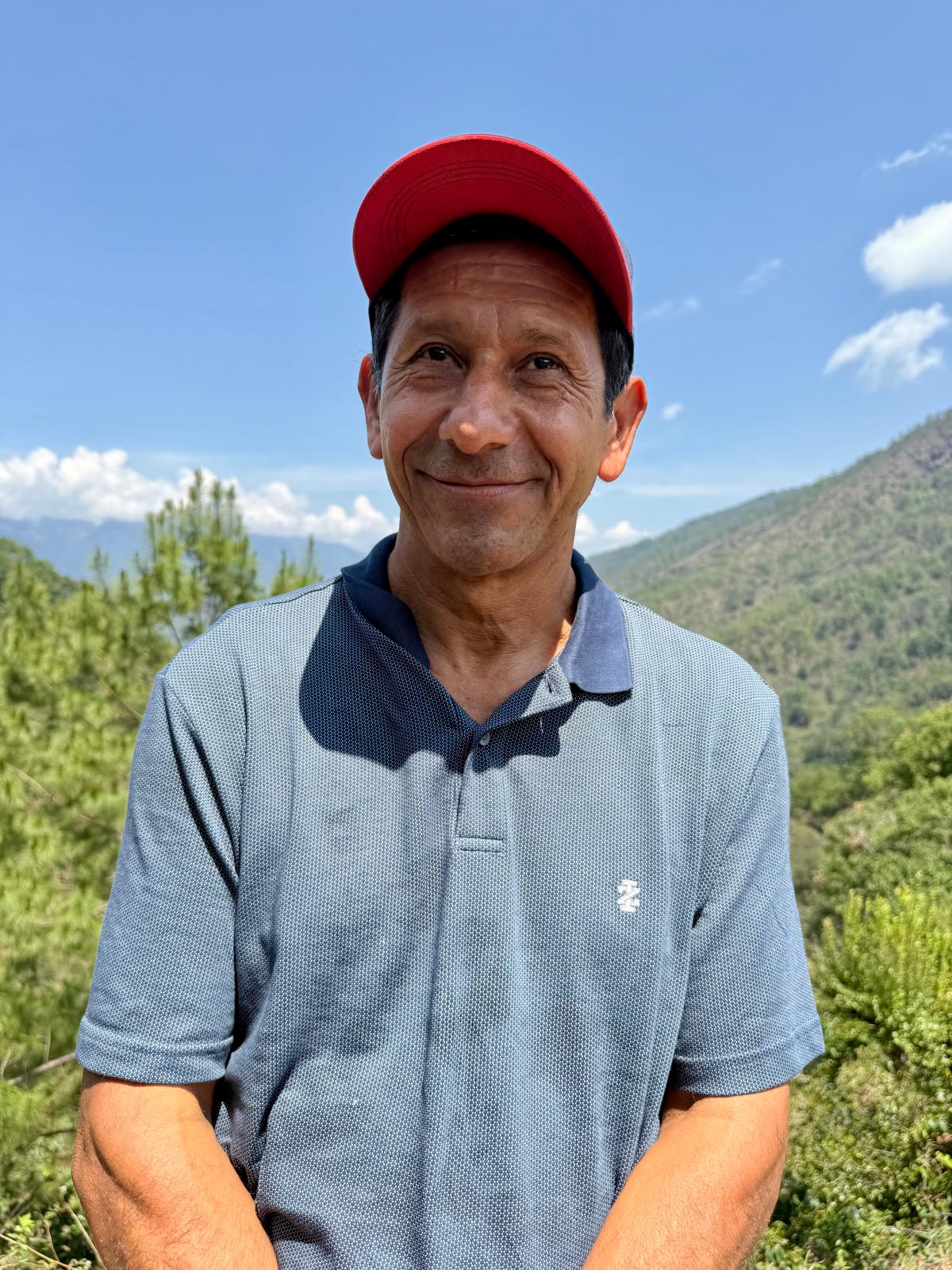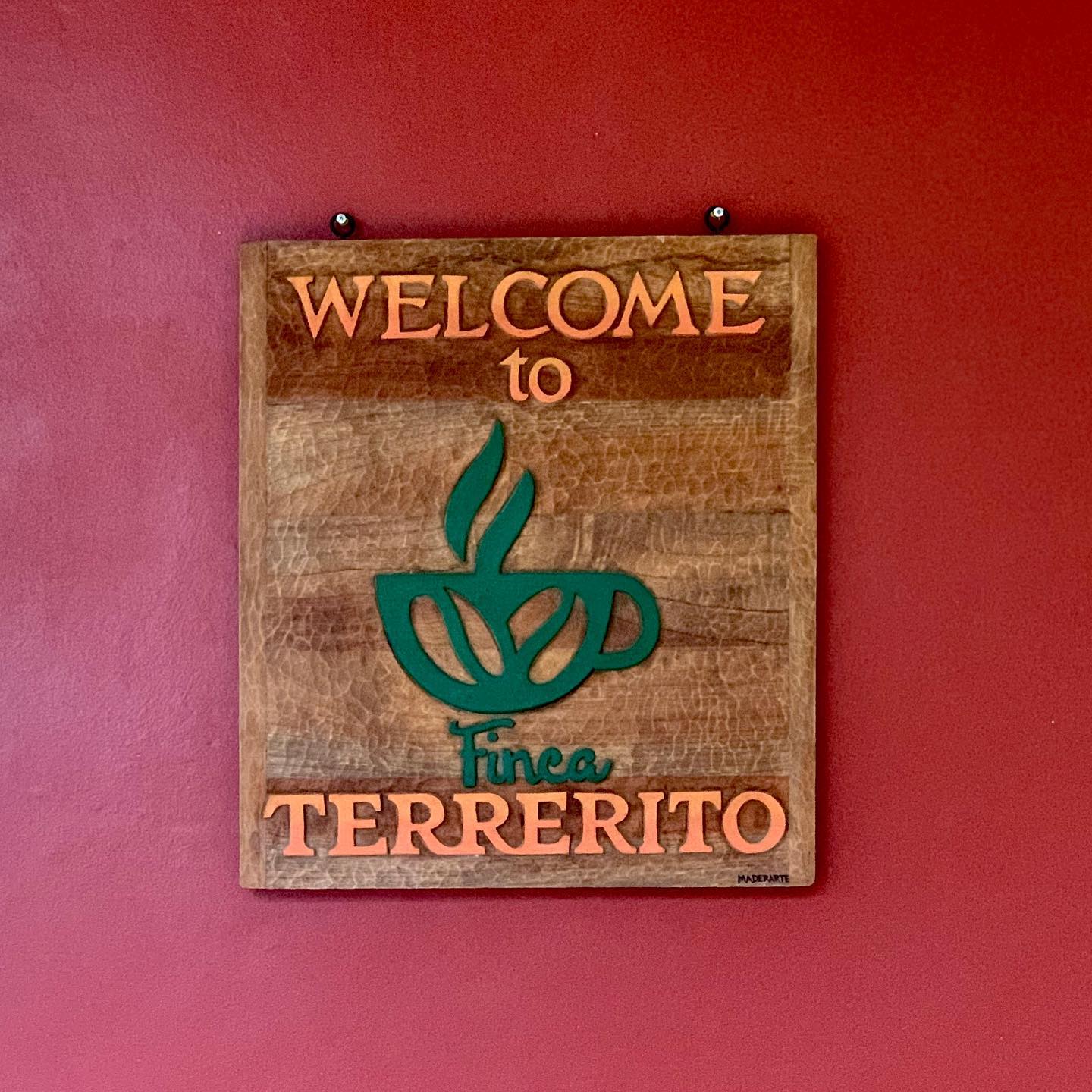By Michelle Fish
It’s a small world, as the saying goes. And our close relationships with people far away can make the world feel even smaller.
But if you want to be reminded just how big this beautiful planet really is, I recommend you take a trip to Sierra Leone. It’s going to take you a long, long time to get there. 23-1/2 hours in the air, to be exact. And that’s not counting layovers.
First, Chicago to Addis Ababa, Ethiopia. Then Ouagadougou in Burkina Faso. Then to Lungi International Airport in Sierra Leone. Then a half-hour boat ride into the capital.

The OBIIS team getting a much needed cup of coffee at the airport in Addis Ababa, Ethopia.
At long last, you will emerge into the bustling chaos of a city that is home to more than 1.3 million people, according to the last census. But it’s going to feel like they might have under-counted, as the vehicle you’re riding in dodges cars, motorbikes, and pedestrians coming at you from every direction.
You can literally feel the city pulsating with life, noise, and heat. Vendors hawk their wares from the middle of the street at every stop light. There’s the smell of burning in the air, as you slowly wind your way through the warren-like neighborhoods of squatter housing, juxtaposed alongside modern apartment buildings. And find, at last, the sanctuary of your hotel.
Welcome to Freetown.
June 2025
For Bob and me, it was our second trip to this beautiful country. We had been there two years ago at the invitation of our friend Kadiatu Allie, to check out what was happening for coffee producers in the remote villages of the up country, near the border with Liberia. It was heart-breaking, and you can read more about that first visit here.
But out of that trip came hope. Kadie had an idea. She was going to buy land and start a model coffee farm to use as a laboratory to train coffee producers in better practices. It had been a very busy two years for Kadie. And we thought it was high time that we checked in on her progress.
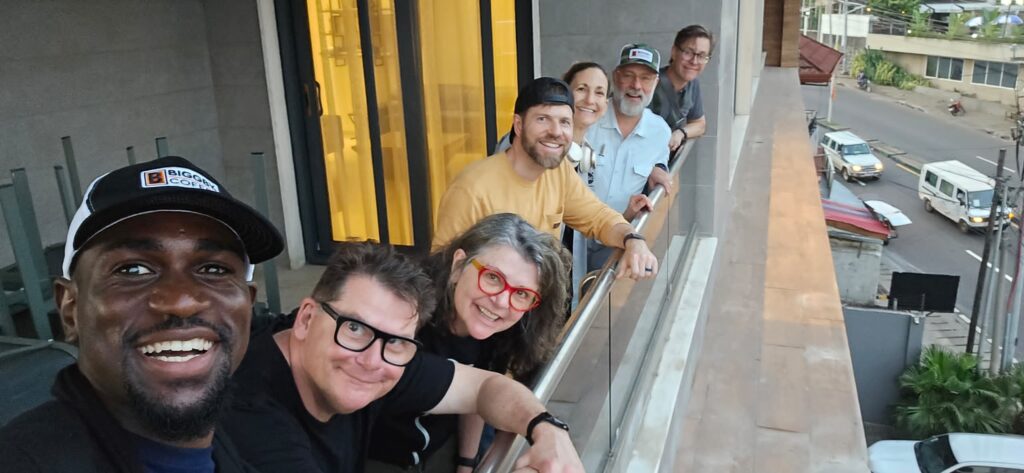
From L-R, Wana Chipoya, Bob Fish, Michelle Fish, Brendon Maxwell, Michelle Shaw, Mike McFall, and Nathan Church on Kadiatu Allie’s apartment balcony just after arrival.
Meet the Team
We were a mighty team of six. In addition to Bob and me, we brought along our friend Brendon Maxwell, the founder and CEO of Utopian Coffee from Fort Wayne, Indiana. He has travelled with us before and is a good friend. We also had Nathan Church with us, from our cinematography partners HAVEY PRO Cinema. And Michelle Shaw, OBIIS’s Content Strategist.
At Lungi airport, we met up with our dear colleague Wana Chipoya, OBIIS’s Manager of Sustainable Farming and Quality Assurance in Africa.
And one more very special guest: Mike McFall, Bob’s partner, co-Founder, and CEO of BIGGBY COFFEE. Talk about a small world. Mike had spent a semester studying in Sierra Leone more than 30 years ago with none other than Kadiatu Allie! He was intrigued by Kadie’s project, and very eager to check out his old haunts in Freetown.
We piled out of the SUV at our hotel to drop our luggage and claim our rooms. Then, back into the vehicles to go to Kadie’s apartment. Although it was literally just across the street, the traffic was so busy that it wasn’t safe to cross on foot. We had to drive.
Kadie was ready for us with a delicious meal of peanut, fish, and chicken stew. Fried plantain on the side, along with Jollof rice, and devilishly delicious doughnuts. It felt like coming home.
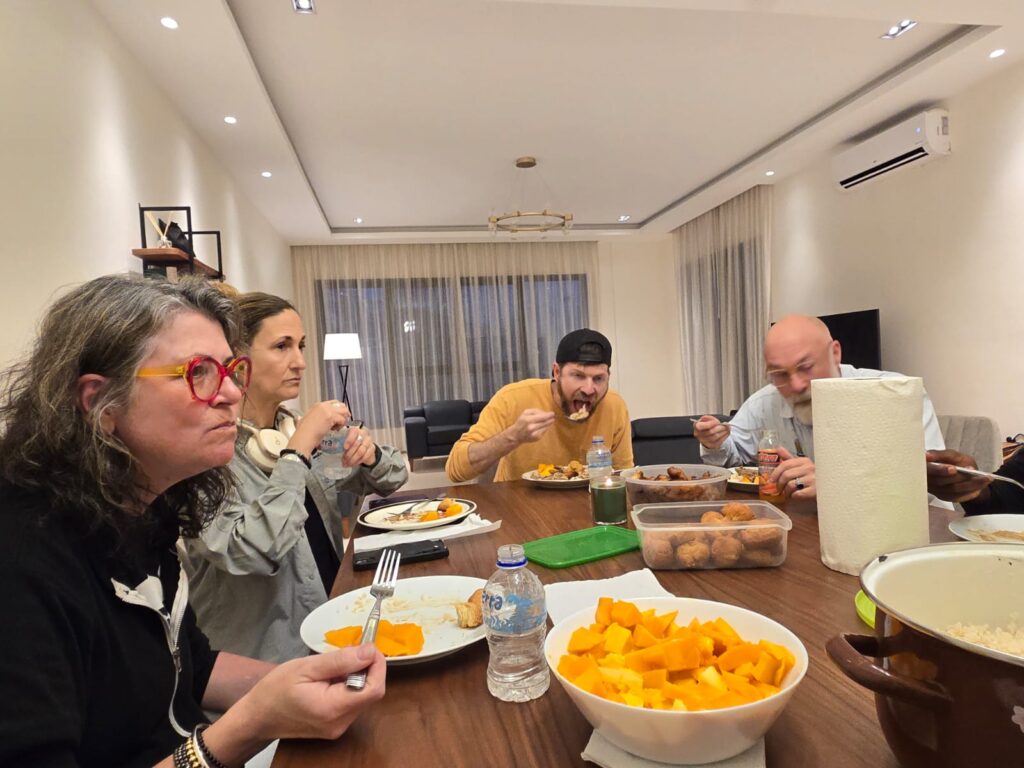
Changes in Latitude
In the time since our last visit, everything has changed for Kadie. For one thing, hardly anyone calls her Kadie anymore. They, and we, call her Minister.
That is because she was appointed by the President of Sierria Leone to be the Deputy Finance Minister for the country. It is a huge job, and she has been at it for over a year now. As fate and good luck would have it, the Government has put a high priority on improving agricultural production over the next few years. Minister’s proximity to the people who create policy around their agricultural goals and determine where and how resources will be allocated will surely help her own efforts in coffee.
In order to take the job, she had to relocate from Chicago. She now lives full time in Sierra Leone, joining her husband, Emanuel, who had moved to Freetown several years earlier. So, being able to be a more regular presence onsite at the coffee project is a side benefit to her new job.
Of course, she’s going to have to fit trips up country into her very packed schedule. Since joining the government, she travels on average once a month. She has represented her country at meetings in Paraguay, Russia, the United Kingdom, Senegal, Togo, Canda, France, and Ivory Coast… and probably more. But even at that, she finds a way to get to the up country most weekends.
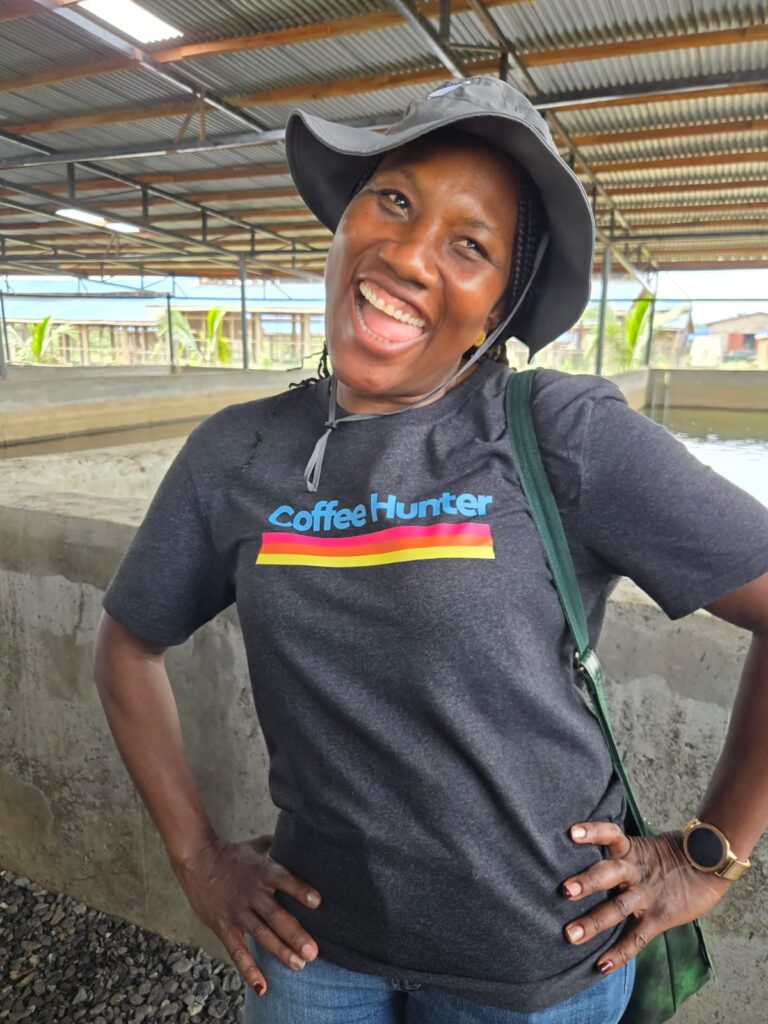
Deputy Minister of Finance, Kadiatu Allie, wearing her OBIIS hat (literally!)
Land
She goes to visit the land she has purchased. And it’s a lot of land: three parcels totaling more than 1,200 acres. It is not in the same vicinity as the places we had visited two years ago. Although she searched for land near those villages, she was unable to find anything suitable for her plans.
Instead, she found three parcels not far from the village where her brother, Junior, lives. Junior, and his friend, the Chief of that village, Chief Abu, have been heavily involved in the project, doing the groundwork to help Minister secure the land. And overseeing the progress of Minister’s newly hired three full-time farm workers.
Our plan is to drive out to Junior’s village the next day. We are particularly eager to walk the land and check out the coffee seedling nursery that she has started with the help of our own Wana Chipoya. But it’s going to take us the better part of a day just to get there.
And we’ll be making a stop on our way. Ostensibly, it’s to pick up chicken manure for use in her project’s composting. But I think that our friend the Minister has an ulterior motive.
Growing the Vision
In the morning, we load into the two trucks that will be our transport for the next few days. It takes us several hours to get out of town, passing through village after village, on our way towards the city of Bo.
At last, we pull into the gates of a large commercial farm, set back from the main road. The farm is owned by the President of Sierra Leone, and it is a hub of commercial activity.
Here, they grow cashew and fruit trees. There are several large hoop houses where they also grow cucumber, habanero peppers, cabbage, tomatoes, pineapples, and all kinds of other food crops.
They are also keeping more than 5,000 chickens. Hence, they have a lot of available chicken poop to share.
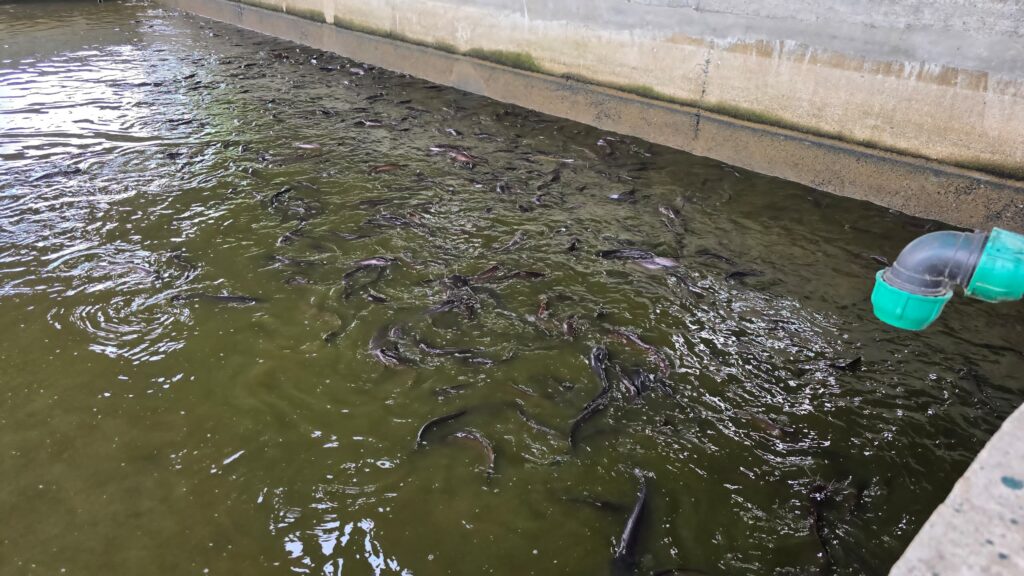
Tilapia and catfish in the commercial fishing operation that is part of the circular farming process at the President’s farm.
And there are huge tanks where they are farming Tilapia. We meet Joseph, the Manager of the fish farm project, who explains to us how they recycle materials that would otherwise be waste on the farm. They use chicken poop as part of the diet of the fish. And, when they change the fishes’ water, they use the “dirty” water as fertilizer for the food crops. It’s a circular system that keeps waste at a minimum.
Most of the farm is run on solar panels. And they have drilled bore holes for irrigation during the dry season. They also have a few cows that they keep for milk.
All of this on a 100-acre parcel that has become an important commercial center for the community. In addition to bringing a reliable source of food to the town, the farm employs 30 full time workers, and a slew of seasonal help. These are good paying jobs in a place where that kind of opportunity is hard to come by.
As we walked around President’s farm, it occurred to us that maybe we were here for more than just a chicken manure pick-up. The Minister was clearly inspired by what was happening here. And it was giving her big ideas for her own project. No wonder she needed so much land.
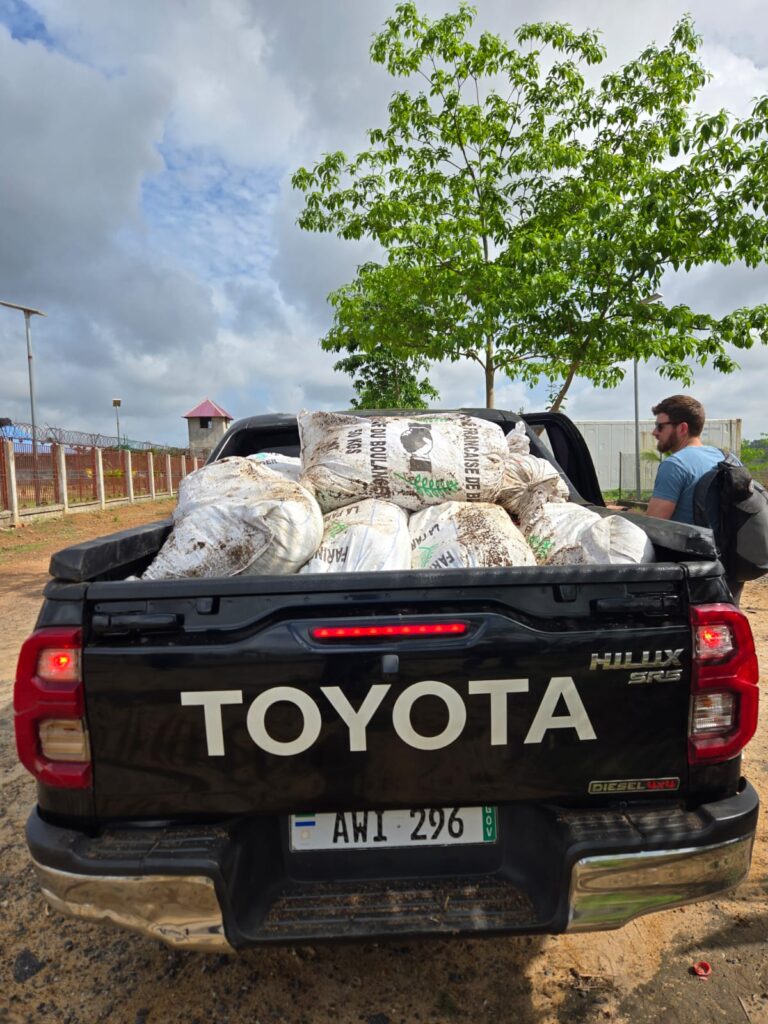
We left the President’s farm with a truck full of chicken manure for Kadie’s coffee project.
The Bo School
We still had several hours of driving ahead of us. But, since we were in the neighborhood, the Minister suggested that we stop in at the Bo School. A boarding school for boys, it is one of the finest schools in the country. Traditionally, attendance was reserved for the sons of tribal chiefs and government leaders. Now, any qualified student can attend, if they can pay the school fees.
And as it happens, the Minister’s nephew was currently enrolled. She wanted to stop by and say hello.
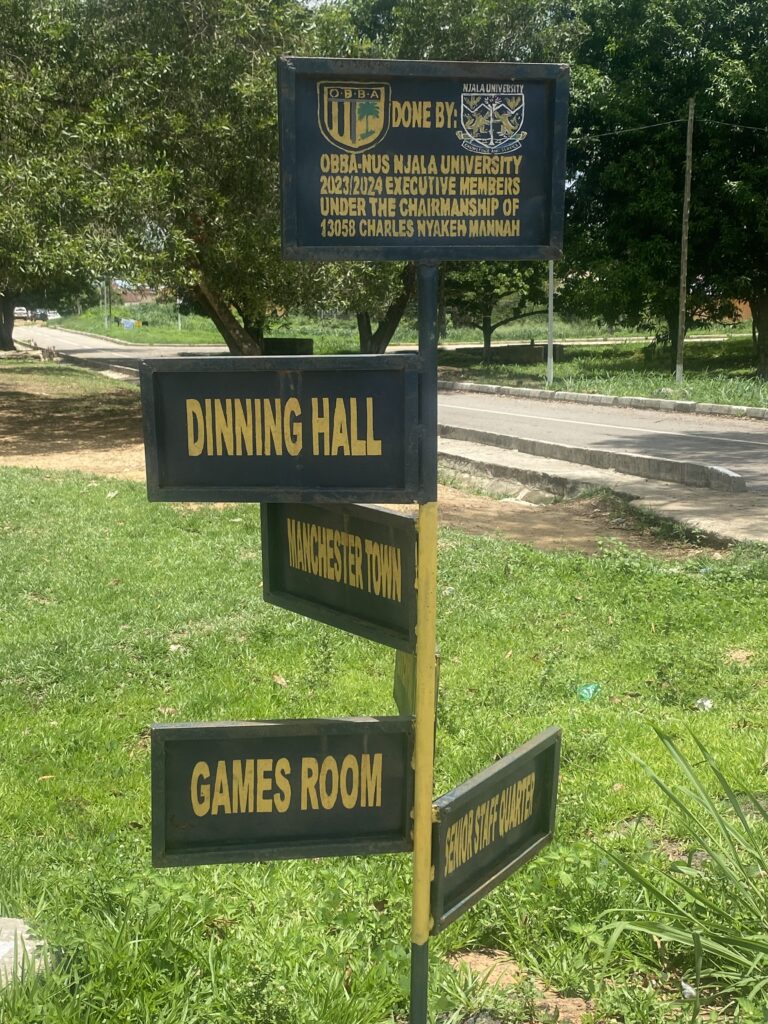
The setting for the campus is beautiful. There are lots of mature trees, and pathways that take you through the maze of low-slung academic buildings. In a nod to Sierra Leone’s colonial past, most of the buildings are named after British cities: London, Liverpool, and Manchester. With a building named Paris, for good measure.
We met up with Minister’s nephew and his friend. In the distance, we could hear the band practicing. Her nephew gave us a tour of the campus culminating in showing us his dormitory. We were all taken aback at the state of the building. Bunk beds with broken frames, and mattresses stacked up on the floor.
This is one of the finest schools in the country, educating the nation’s brightest young men. And yet, the country doesn’t have the money to keep the buildings maintained. It’s a metaphor that underscores what Sierra Leone as a whole is facing. So much potential, and so few resources. There is so much work to be done.
As it happens, they are in the process of building a new dorm that is being completed with funds from a public-private partnership. Maybe it’s a sign of the times, but the new building’s name is Beijing.
Junior’s House
After many more hours of jostling on the road, we rolled at last into Junior’s house just in time for dinner. There was a big crowd of people waiting for us.
His friend, Abu, is the Chief. But I think that Junior maybe the unofficial mayor. He has a larger than life, warm and welcoming personality, and everybody in town knows him. When he’s at home, his front yard becomes like a community center. And everybody shows up for meals. Our mighty team of six was swallowed up into a big-hearted welcome of hugs, handshakes and lots of laughter. We felt like family.

The team with Junior, center, in the pink-striped shirt.
After dinner, we collapsed into our rooms for rest. As a side note, Bob and I had an extra roommate. It was the largest spider I have ever seen with my own eyes. It was bigger than my hand. And it was comfortably hanging out on the opposite wall, about 8 feet from where we would be sleeping.
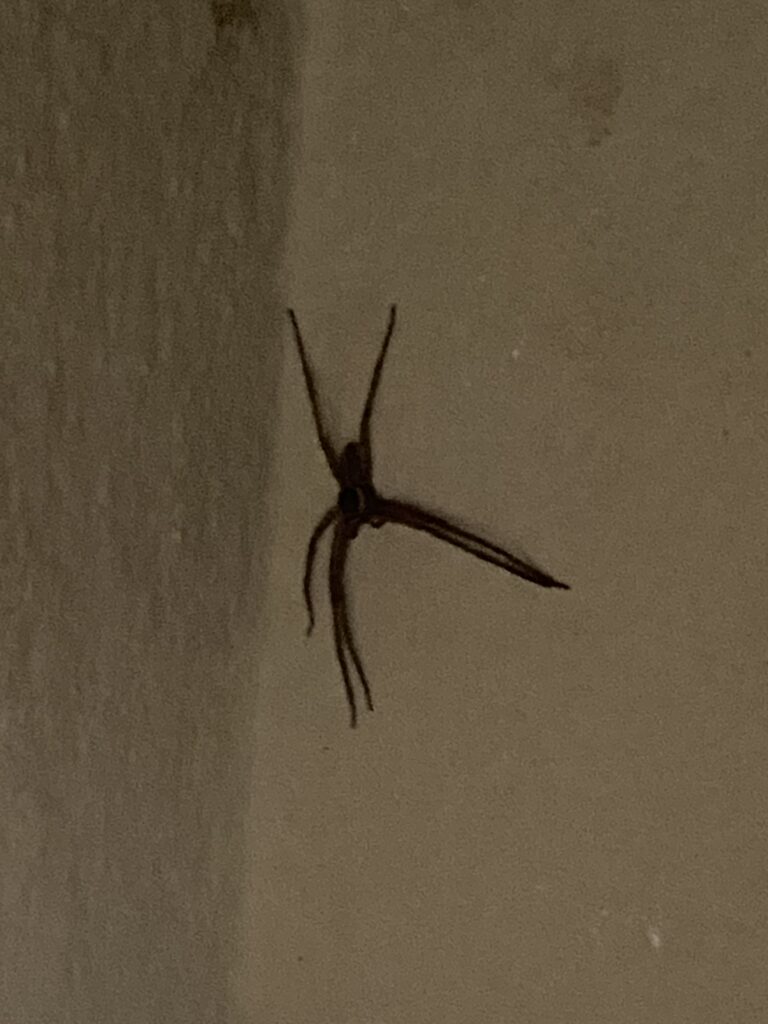
Our “roommate”
I asked Junior about it, and we ascertained that it wasn’t dangerous. He offered to get rid of it for us. But I thought better of it. After all, that spider was probably eating things that would otherwise be eating me.
That doesn’t mean, however, that I didn’t keep my eye on it whenever I was awake.
The Nursery
After a hearty breakfast, we set off early in our trucks to head out to the land. The land is remote. Too remote to reach by truck, alone. So, we travelled the last few miles, ferried on the back of a team of motorbikes. We were met at the nursery by Salieu Bolo, one of Minister’s permanent farm workers.
Wana had been there two months before us to help the Minister set up her nursery. He had trained her workers, as well as several other farmers, on the proper technique to build a seed bed.
They had planted 10 KG of coffee seeds, which in theory would yield 6,000 seedlings. Wana had taught them what they would need to do to get the seeds to germinate, and how to take care of the babies. They, and we, had all been anxiously awaiting the results. Now was the moment of truth.
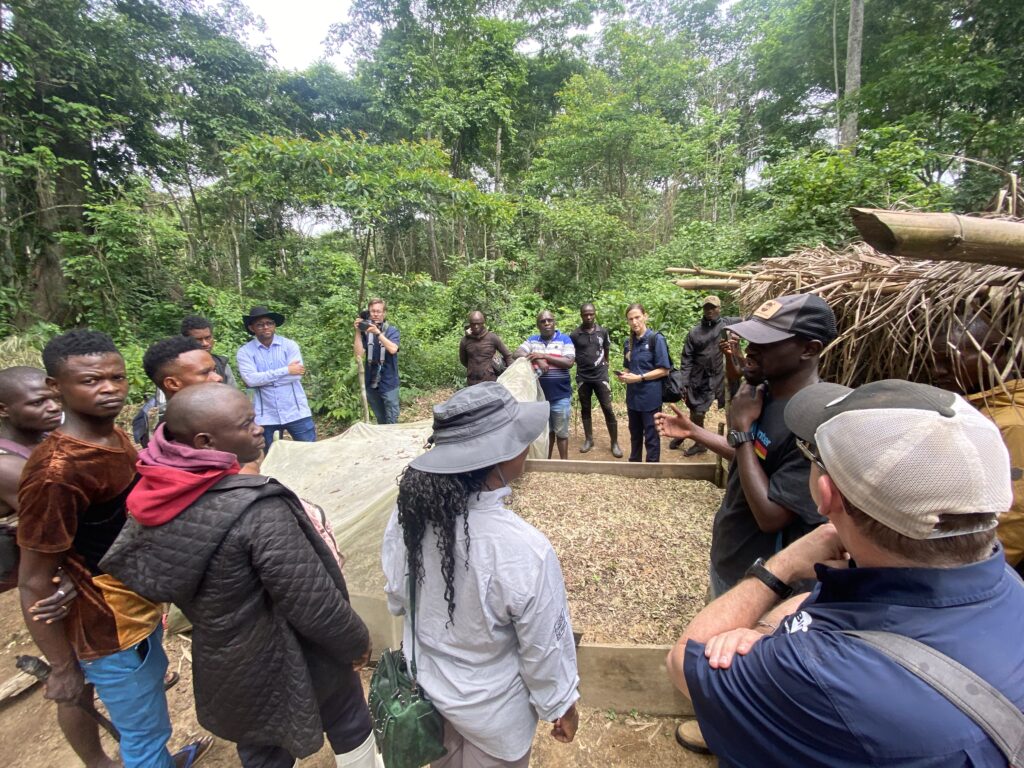
To our delight, they had 1,300 or so very healthy-looking seedlings. Which means that they had about a 20% germination rate.
On the surface, that might seem like a disappointment. But to us, it was nothing short of a miracle. After all, no one on her team was a coffee farmer, least of all Minister. None of them had any experience in the coffee world whatsoever.
Not only that, Sierra Leone was not known for growing varieties of Arabica. Rather, the coffee farmers that we had encountered on our last visit were all growing Liberica and other forms of Robusta, which are traditionally hardier plants and easier to grow, particularly at lower elevations.
As far as we know, Minister was the first person in Sierra Leone to try the Catimor 129 variety of Arabica. And she had 1,300 seedlings!
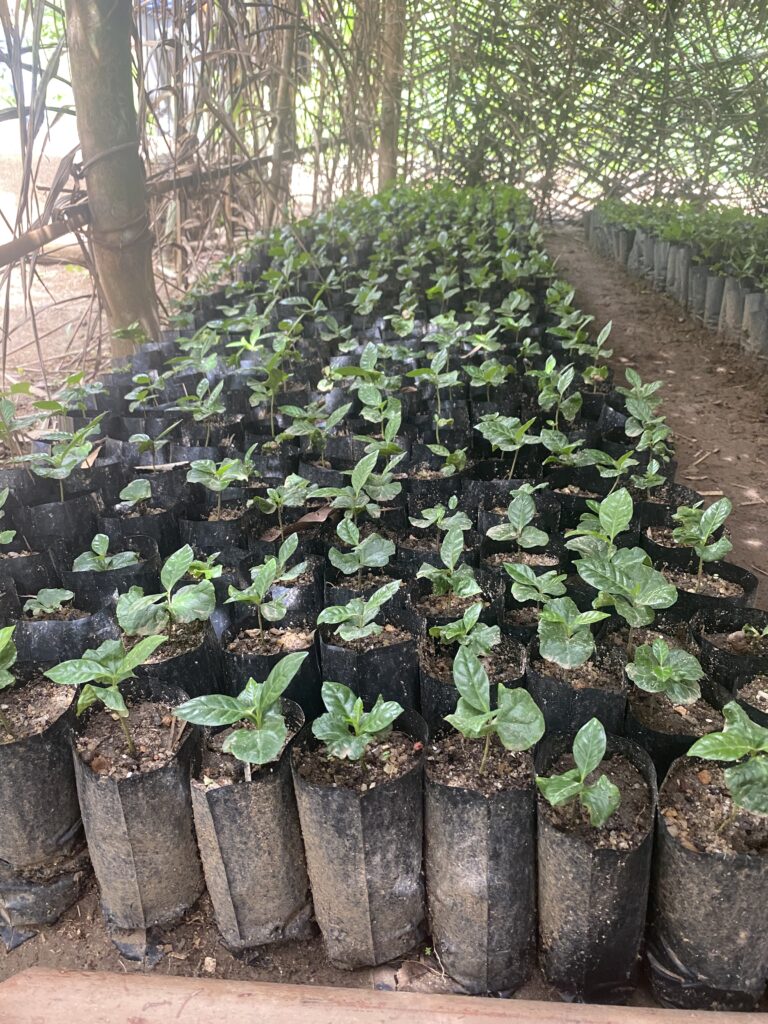
While we were busy congratulating her and her team, Wana was checking out the nursery. Both the top and the sides were completely covered by the structure they had built with natural materials. That was keeping the babies from getting enough light and airflow.
Wana suggested that they cut the sides down by half and add plastic sheeting to the roof. That way, the seedlings would still be protected from the elements when the rainy season started, while allowing more light and air to circulate.
It took about half an hour to get it done.
Walking the Land
Later that afternoon, Minister took us to another one of the parcels that she had purchased so that she could show us where she was planning on building the model farm.
As we walked the land, she talked of her dreams for the project. They included building a very comprehensive commercial space, much like the President’s Farm. It turns out it was no accident that she took us there.
She wants to create the same kind circular system that we saw. That includes farming chickens and tilapia. As well as creating a fruit and tree nut orchard, and hoop houses for agricultural crops. In addition, she wants to build housing and a school. It will be a major source of employment for the communities surrounding the project. And it will provide access to protein and other food sources that are hard to find in these rural areas.
Her plans are big. And none of us have any doubt that they are within her reach.
All of this will be anchored by the coffee farm.
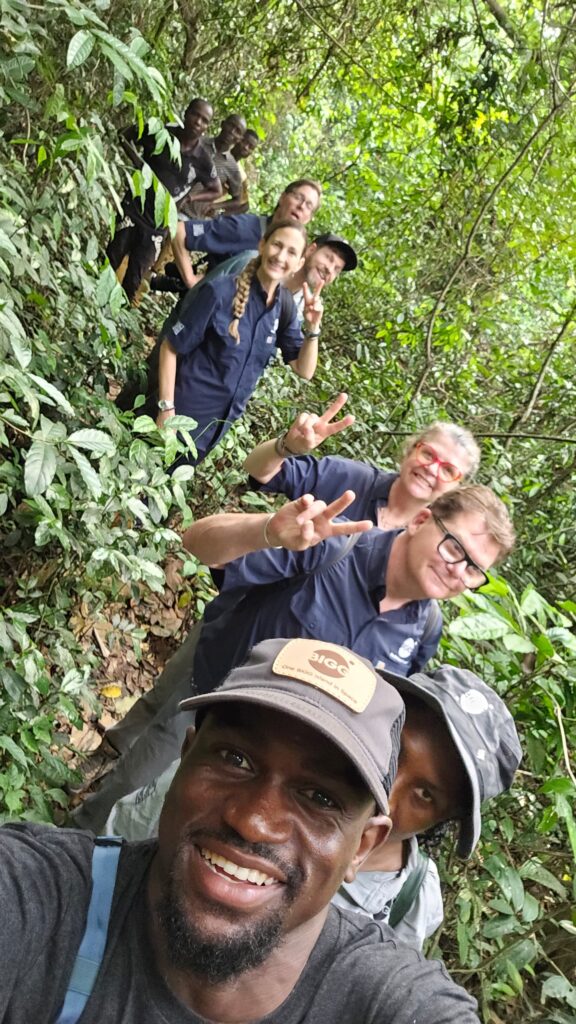
Walking one of Minister’s parcels of land for her coffee project.
As we walked the land, we noticed that none of us were particularly out of breath. That is unusual in coffee country, which is at high elevation. Michelle Shaw pulled out her phone to check her compass. We were at 875 ft.
Feet vs. Meters, Arabica vs. Robusta
Arabica typically grows at between 800 and 2,000 meters of elevation. That’s about 2,400 to 6,000 ft. We were at 875 ft, well below the threshold. If this was a movie, the soundtrack at this point in the walk would have been all minor keys and jarring chords. The news hit Minister like a ton of bricks.
It might help to explain why her germination rate for the seedlings was lower than expected.
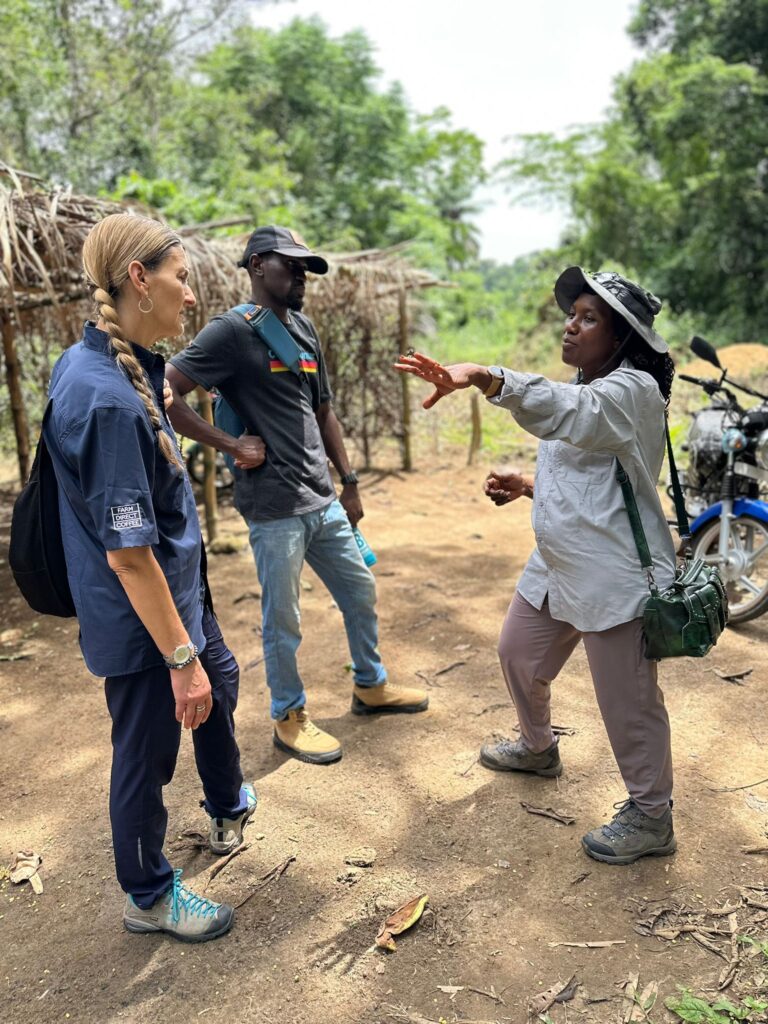
It’s not that she didn’t know the elevation. But when it was reported to her in feet, she assumed it was meters. And she had made all of her decisions about what kind of coffee to grow based on faulty data.
We walked on, with Minister determined to find a higher point on her land. But we were, literally, at the top already.
Part of what drove her desire to grow Arabica is because that is primarily what BIGGBY COFFEE uses in its lineup. And so, that is primarily what OBIIS sources for BIGGBY COFFEE. And she was (and is) determined to grow quality coffee that BIGGBY COFFEE will be proud to serve in all of its locations.
Robusta, although hardier and more heat tolerant than Arabica, has an undeserved reputation as being of lower quality. It’s not true. There are producers all over the world growing amazing Robusta.
It took some time, and a lot of conversation, but we assured her that it would not be a barrier to our partnership. When she grows good coffee in large enough volumes, be it Robusta or Arabica, we will be there to buy it at a fair price.
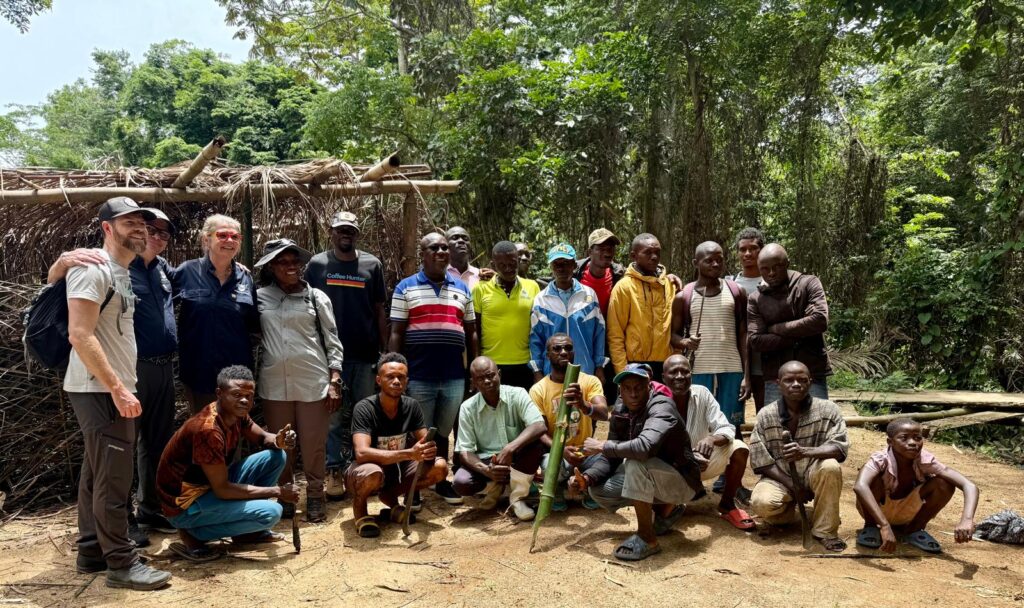
With the team at the Nursery
The Fallout
Bob has a saying: iterate, then reiterate. The most important thing was that Minister had gotten started. She has the vision. She has the land. And she has 1,300 beautiful Arabica seedlings that she will plant in the field, when they’re ready. We’ll see what happens.
In the meantime, she has begun the work of tracking down seeds for varieties of Robusta. There is also a small chance that she might be able to find some seeds for Stenophylla, which is a variety of coffee that is native to Sierra Leone but has not been widely used in commercial production. There are all kinds of possible pathways that she can take, each of which can lead to a successful coffee crop.
While she figures out how she’s going to do the coffee, work on her larger vision for the community continues.
Meeting the Chiefs
Each time we walked through a village, protocol required that we stopped to meet the Chief. For the people there, it is a very big deal that one of the up country’s own daughters has a been appointed to such a high position of responsibility within the government.
Minister comes to these impromptu meetings prepared with gifts for each Chief. I marveled at her grace in these moments. In spite of the heat, and how tired we all were, she was determined to show her respect to the people by stopping to talk and to listen to their concerns.
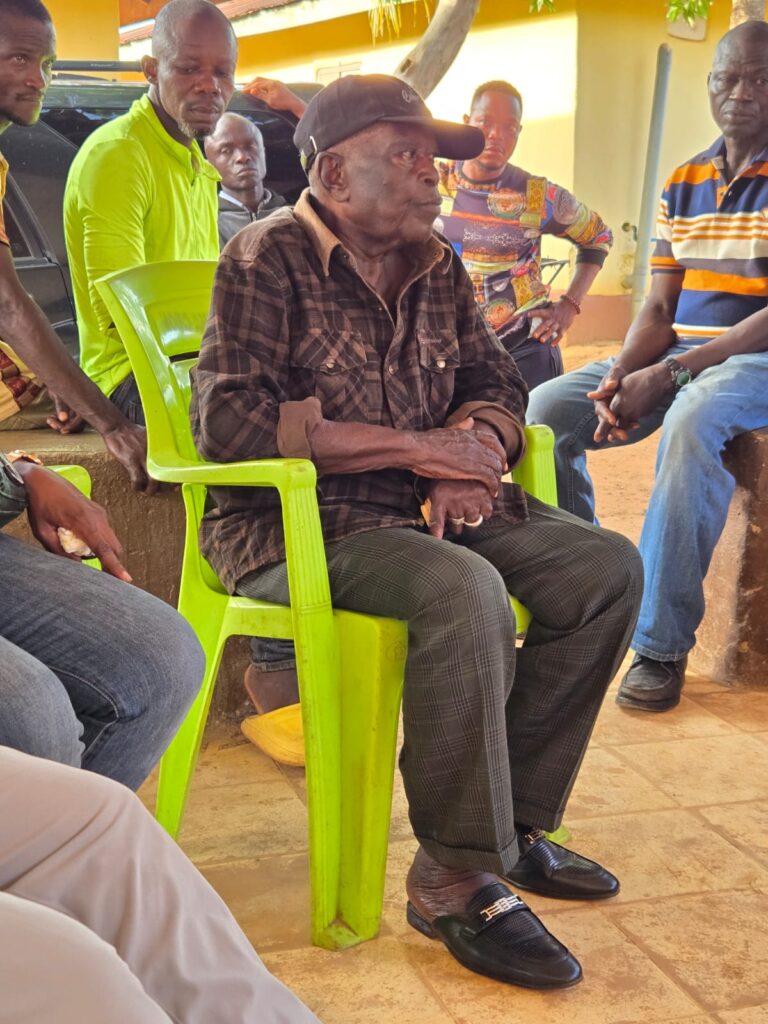
Paramount Chief Joseph Ngevao of Jojoima, in the Kailahun District
These meetings gave us a chance to hear what the people consider to be their greatest challenge. Time after time, they all said the same thing: they need opportunity. They need access to employment. As we listened, it was becoming clearer to all of us just how big of an impact her project could have. The commercial farm will provide desperately needed employment and, of course, reliable access to a healthy food supply. But more than that, jump-starting the coffee industry will give some of these subsistence farmers the chance to change their economic circumstances. And it will bring hard currency to a country that desperately needs it.
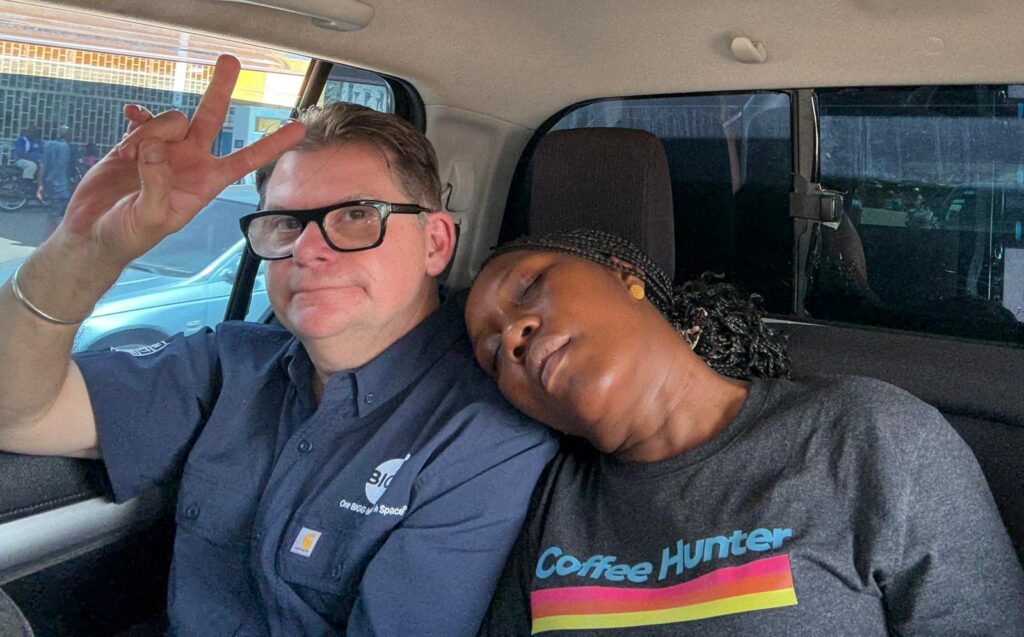
It had been a long day of walking and talking, and we were all exhausted. We headed back to Junior’s house and got there just as the sun was setting. It was another night of great community engagement and delicious food with the assembled crowd in Junior’s front yard. Then we tumbled into our beds for a well-earned rest.
My new friend, the spider, was still in the same spot on the wall.
Mastitis
The next morning, we got an early start on our trip back to the capital. It’s a long way to Freetown, so there was lots of good car time conversation. I was in the truck with Minister. We were talking about a young woman that we had met on our first visit. She was carrying a baby on her hip and had the worst case of mastitis that I had ever seen. The cyst on her breast was tennis ball-sized, and deep red. She was in so much pain.
We were travelling with our colleague Dr. Jorge Ferrey, who is a medical doctor, as well an amazing coffee farmer. He had been able to examine her, advise her relatives how to clean and clear the infection in the cyst, and write prescription for antibiotics. Jorge believed that she would have died without our intervention. And it’s truly a miracle, because we weren’t even scheduled to be in her village in the first place.
I had been thinking about her and wondering about how she was doing ever since. It was too far of a drive to go to see her. But Minister had her phone number, so we called her.
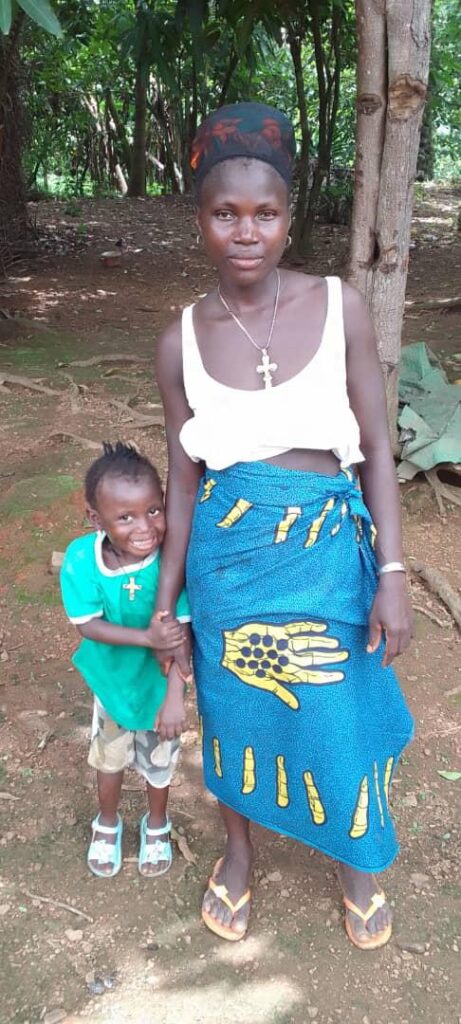
Miatta and her daughter, fully recovered.
She is thriving. As we talked, you could hear her daughter, now a rambunctious toddler, playing and laughing in the background. She made a full recovery. She has been able to work and take care of her child. She expressed her deep gratitude to Jorge, and to Minister for buying her the medicine that she needed to get better.
That was one of the best phone calls I’ve ever had.
Freetown
Our last day in Sierra Leone we spent retracing Mike McFall’s memories of his time in Sierra Leone as a young college student. It was so much fun getting to see the town through his eyes.
Much has changed since he was there last. For one thing, the population in the city has tripled. The amount of traffic, and the sheer number of people competing for space on the sidewalks and in the markets was overwhelming.
For the Minister, it was a regular workday at the office. But the rest of us were going exploring.
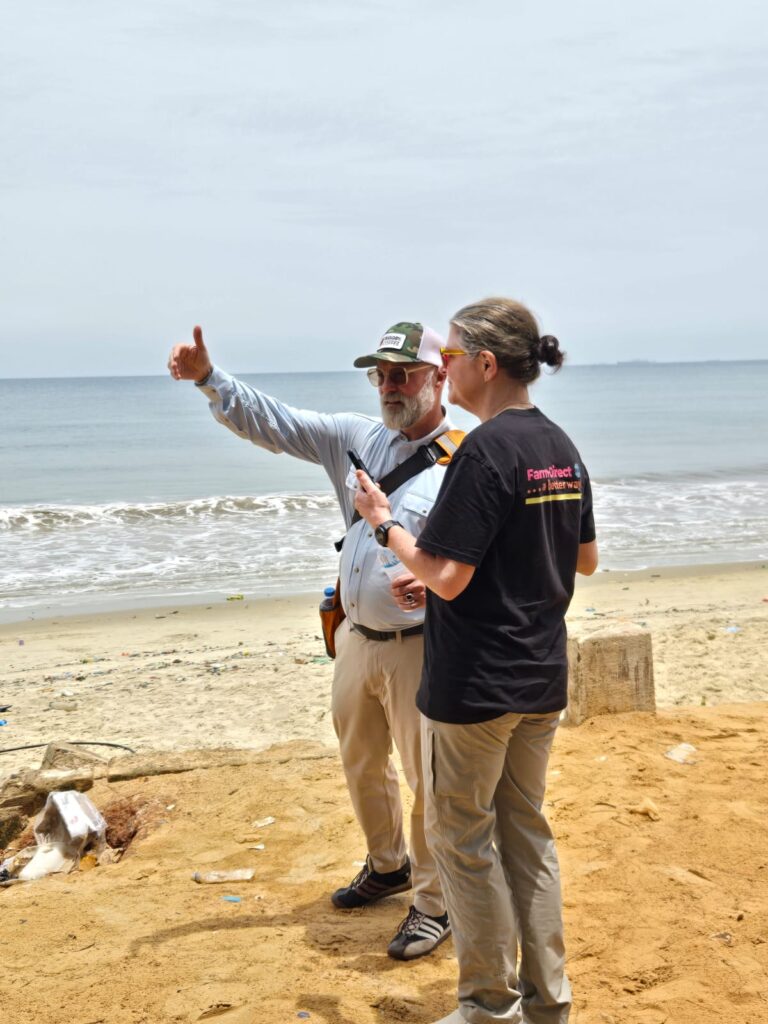
Walking some of Mike McFall’s favorite places in Freetown.
We had lunch at one of Mike’s favorite hangouts from his younger days, the Crown Bakery Restaurant. It’s a place that he could reliably sit in air conditioning, get a coke, and watch a little television. It’s still there, and it’s still rocking and rolling. We had a delicious meal, trading lots of stories and hearing about his adventures as a young man.
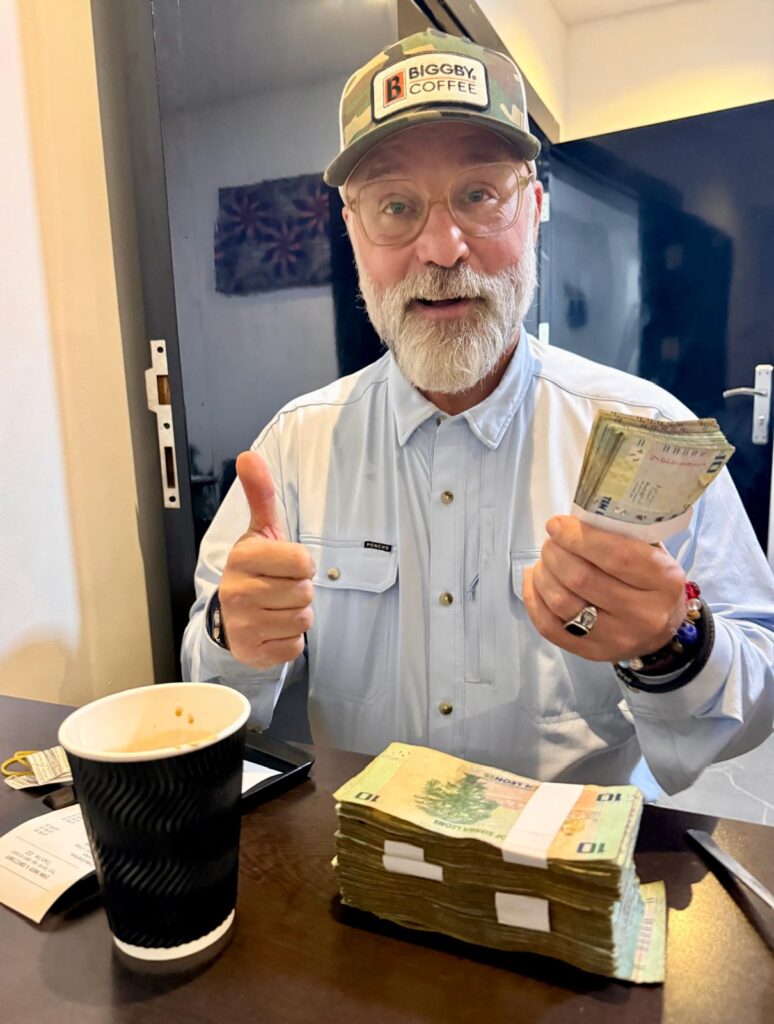
Mike McFall paying for the groups lunch with a stack of very small bills.
We did a little shopping in one of the city’s thriving street markets. And we took a ride up to his former University, where he and the Minister had once been young students together. He was even able to go and visit his old dorm room.
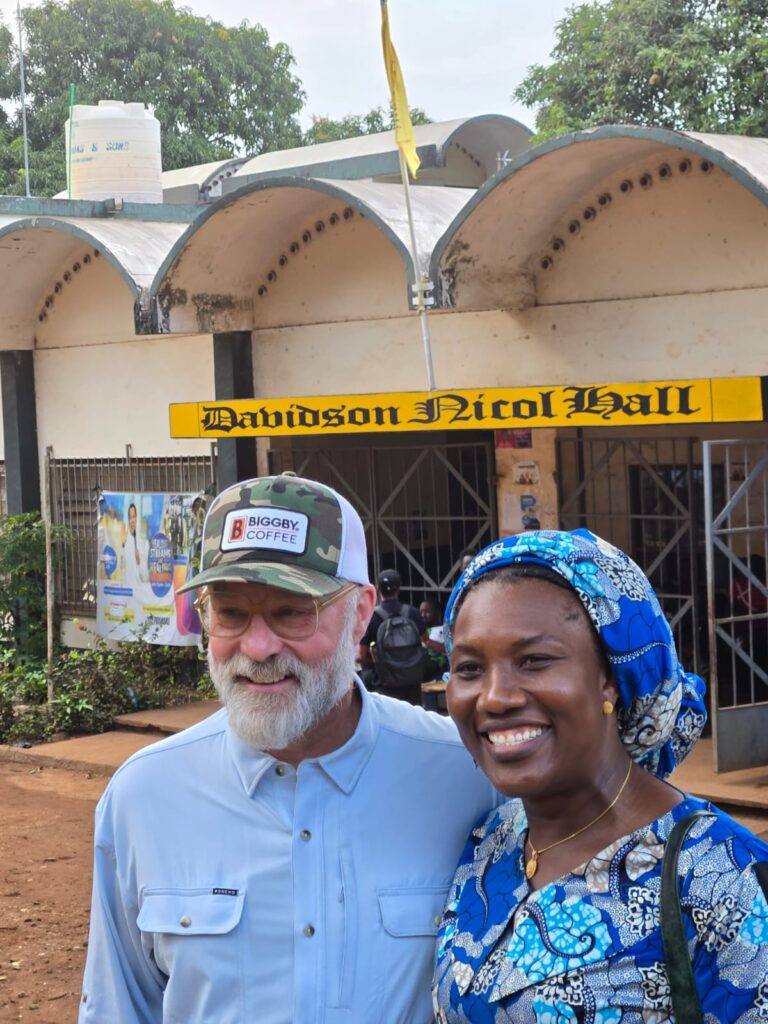
Mike and the Minister standing outside of their old dormitory.
Our day and our trip concluded with a stop at the Ministry Building to see our friend Kadie. As we sat in her office, she calmy managed all of the incoming questions from her assistants, phone calls, papers that needed signing, and requests for meetings. Behind her big desk, with all of the flurry of activity all around her, she was Minister, all the way.
As I watched her work, I knew in my heart that her dreams for her people are all within her reach. We can’t wait to go back and see what happens next.
